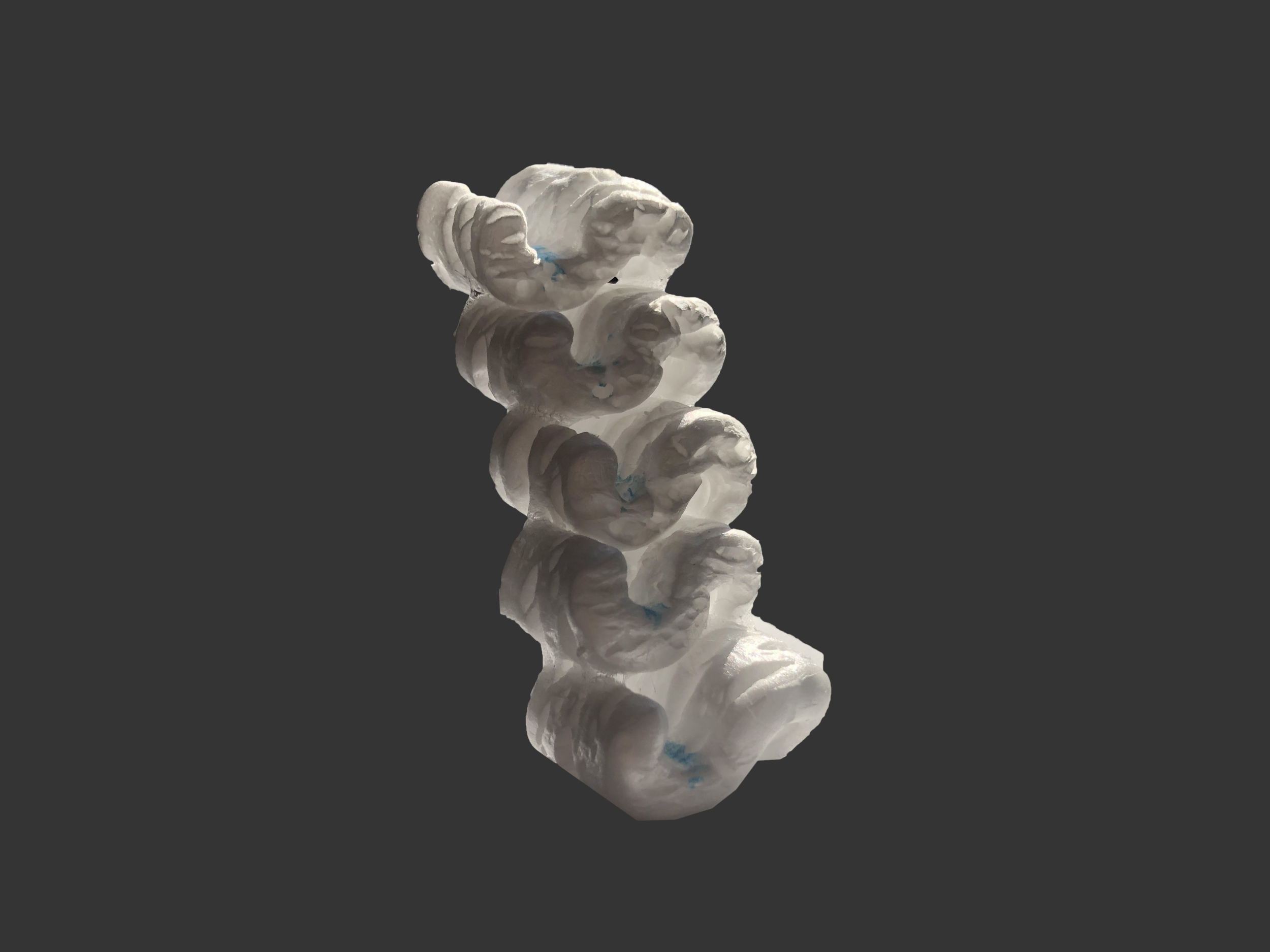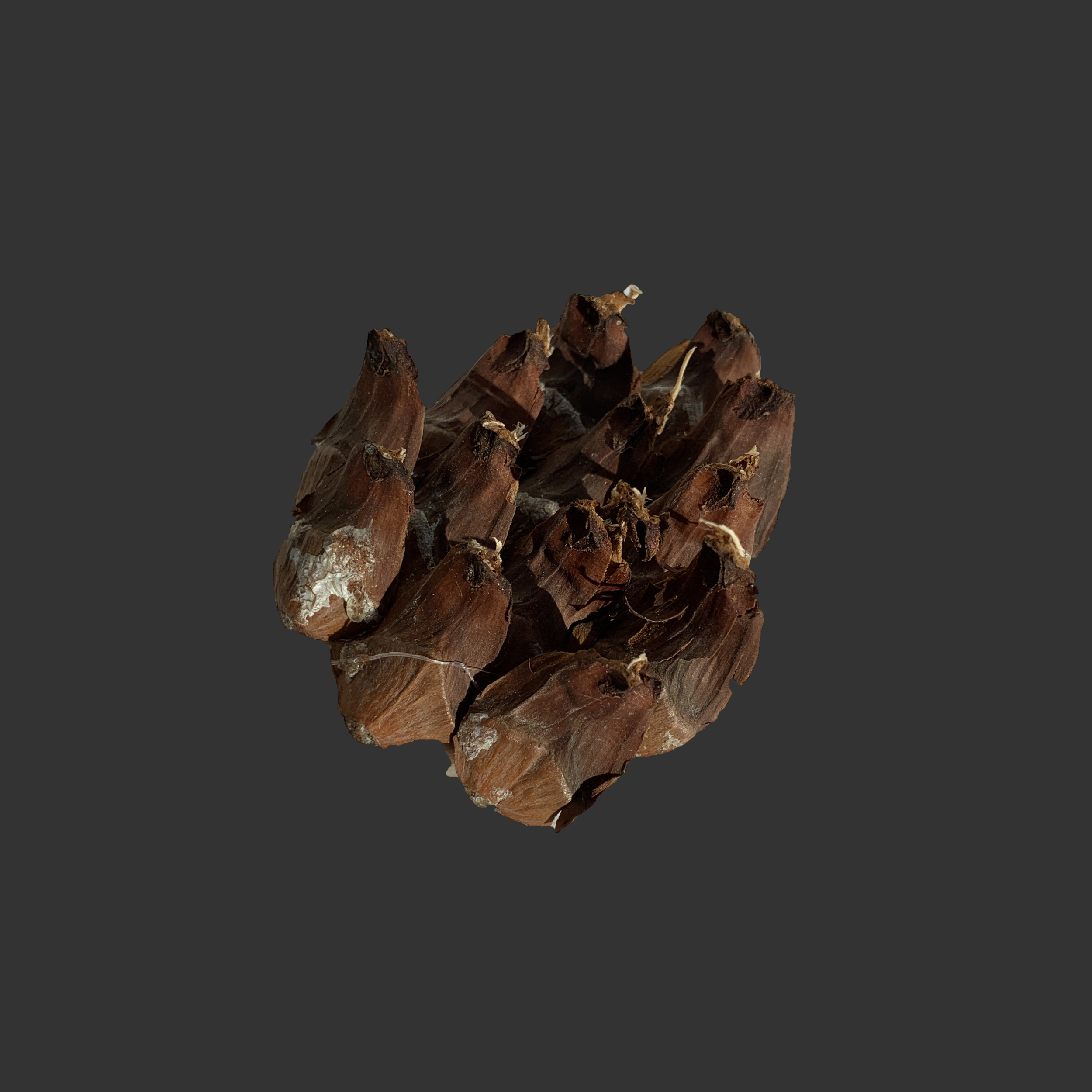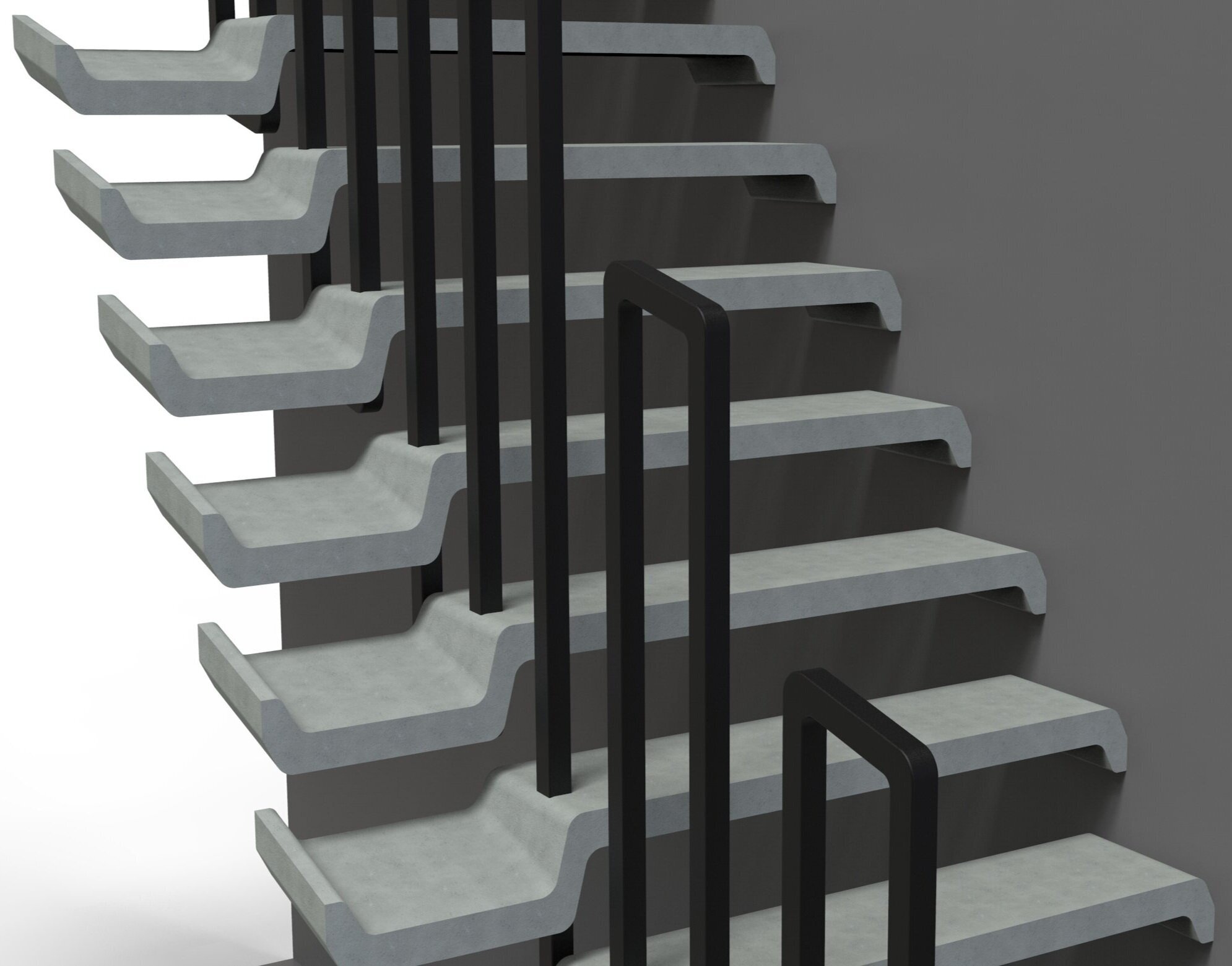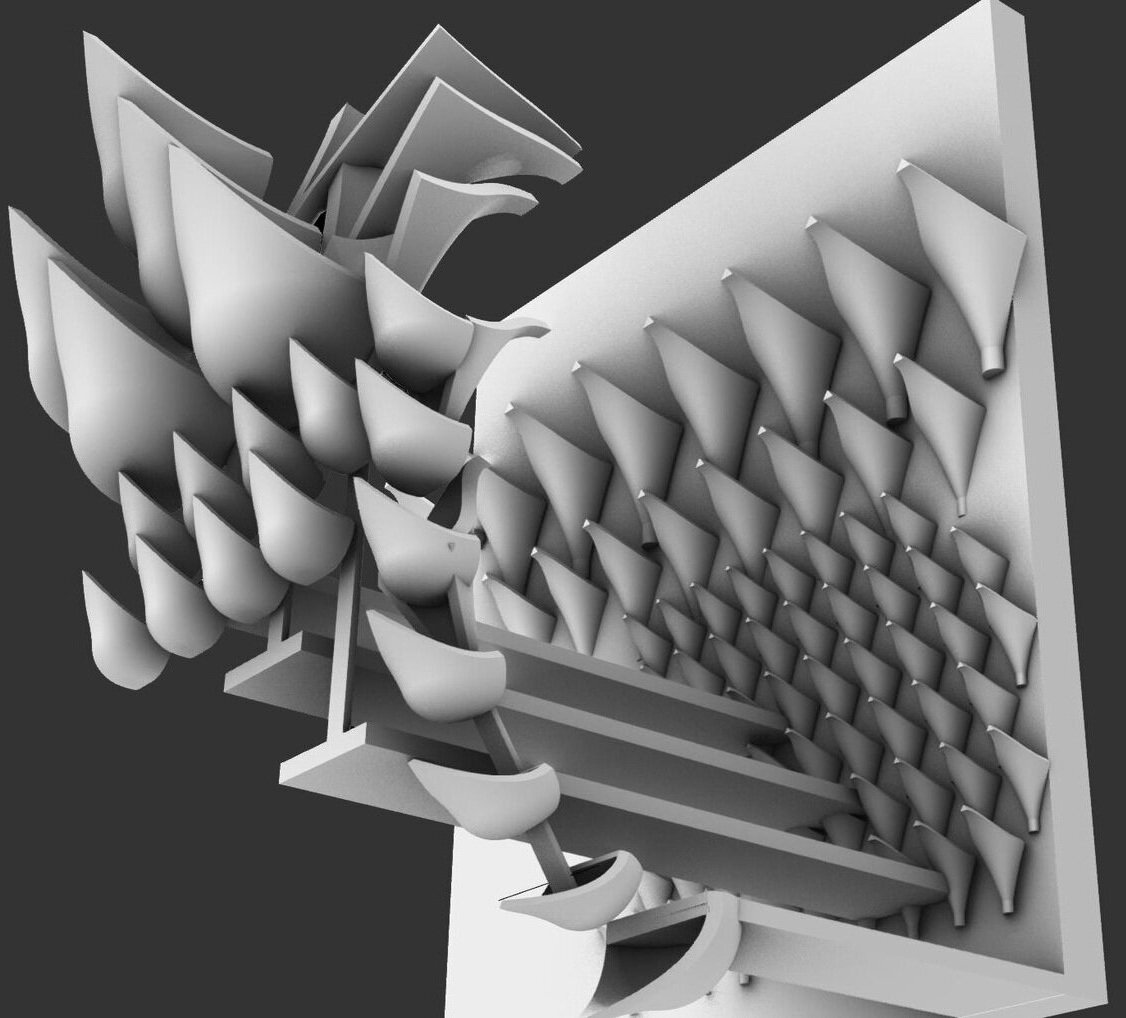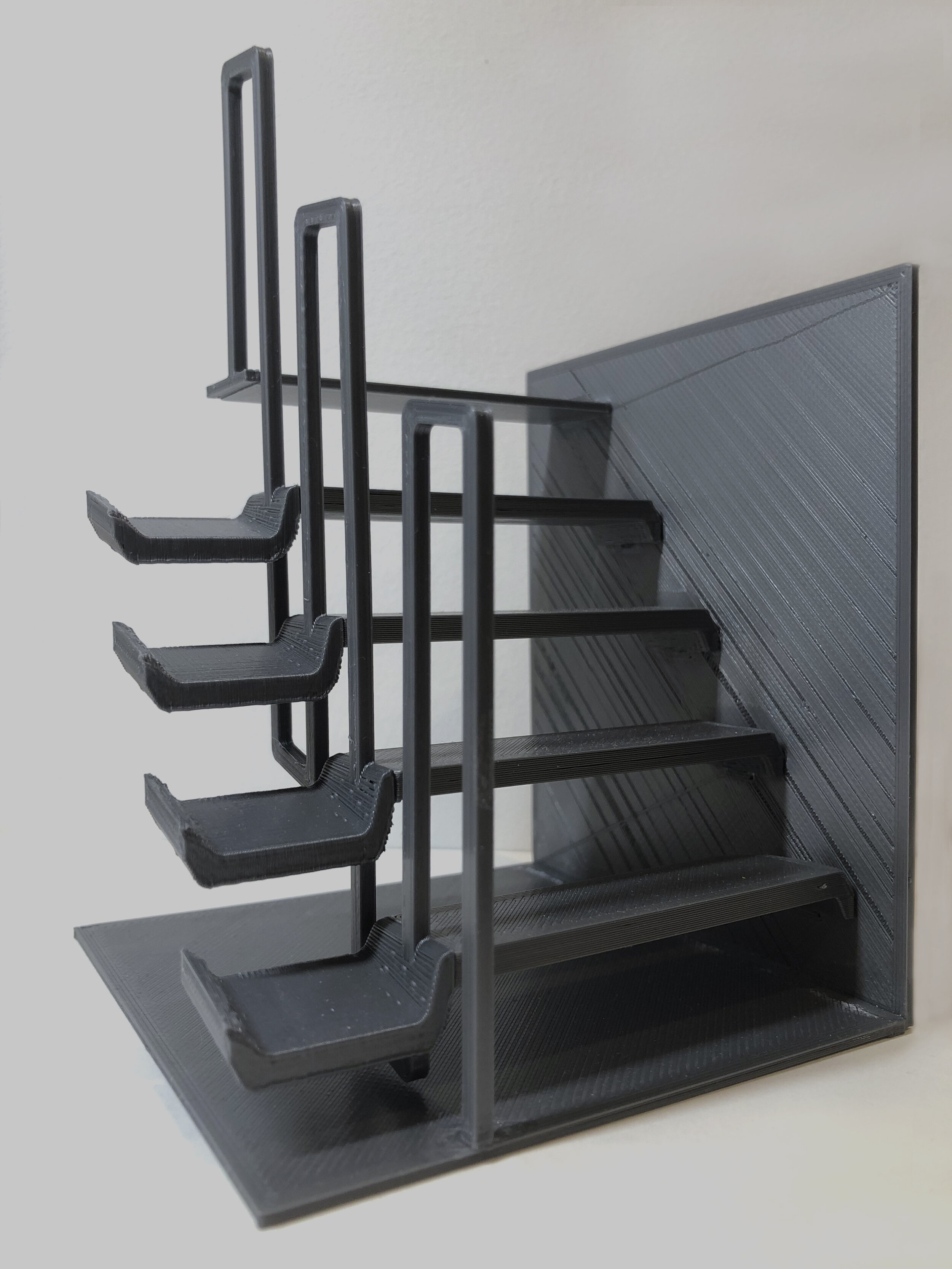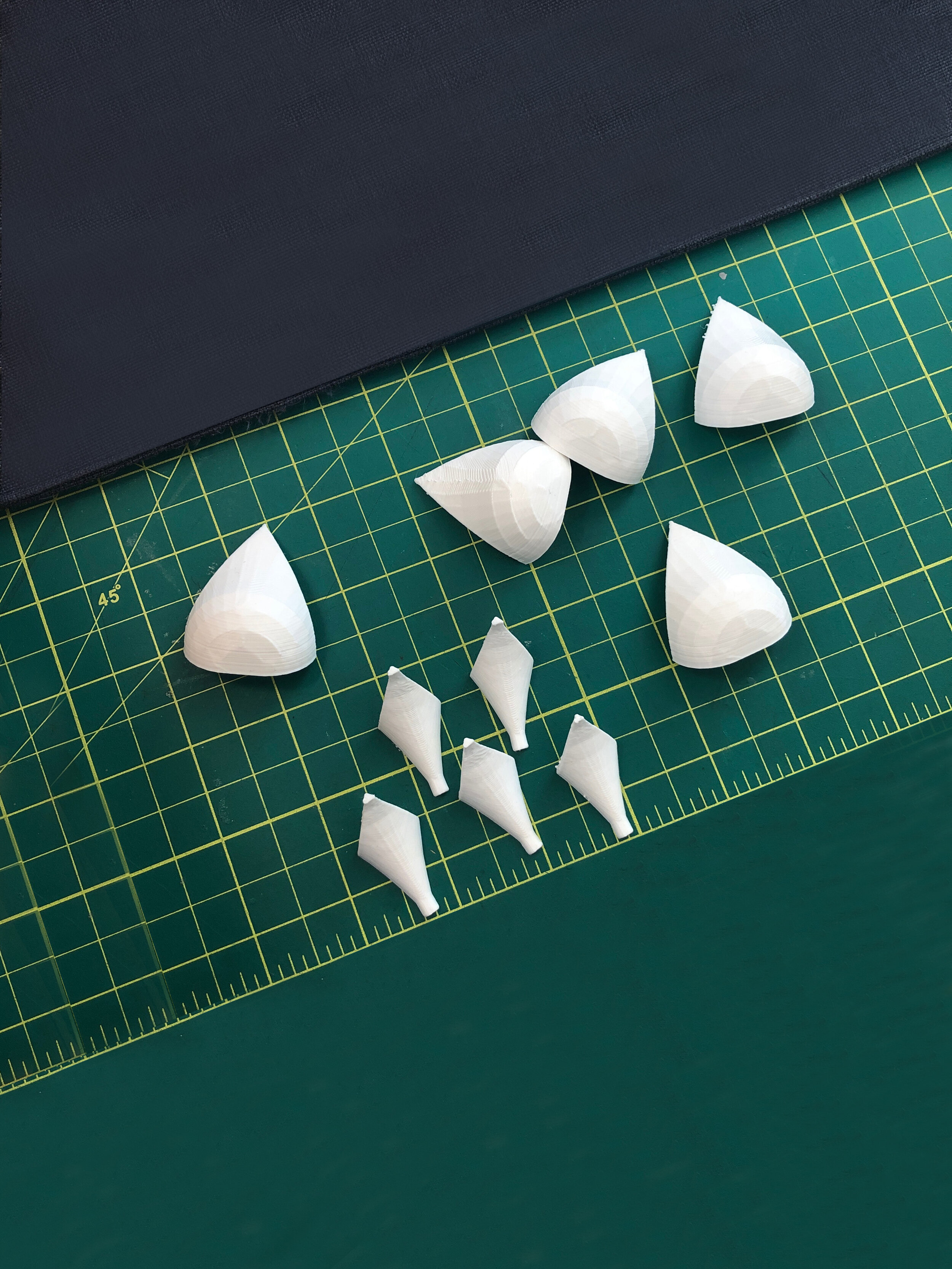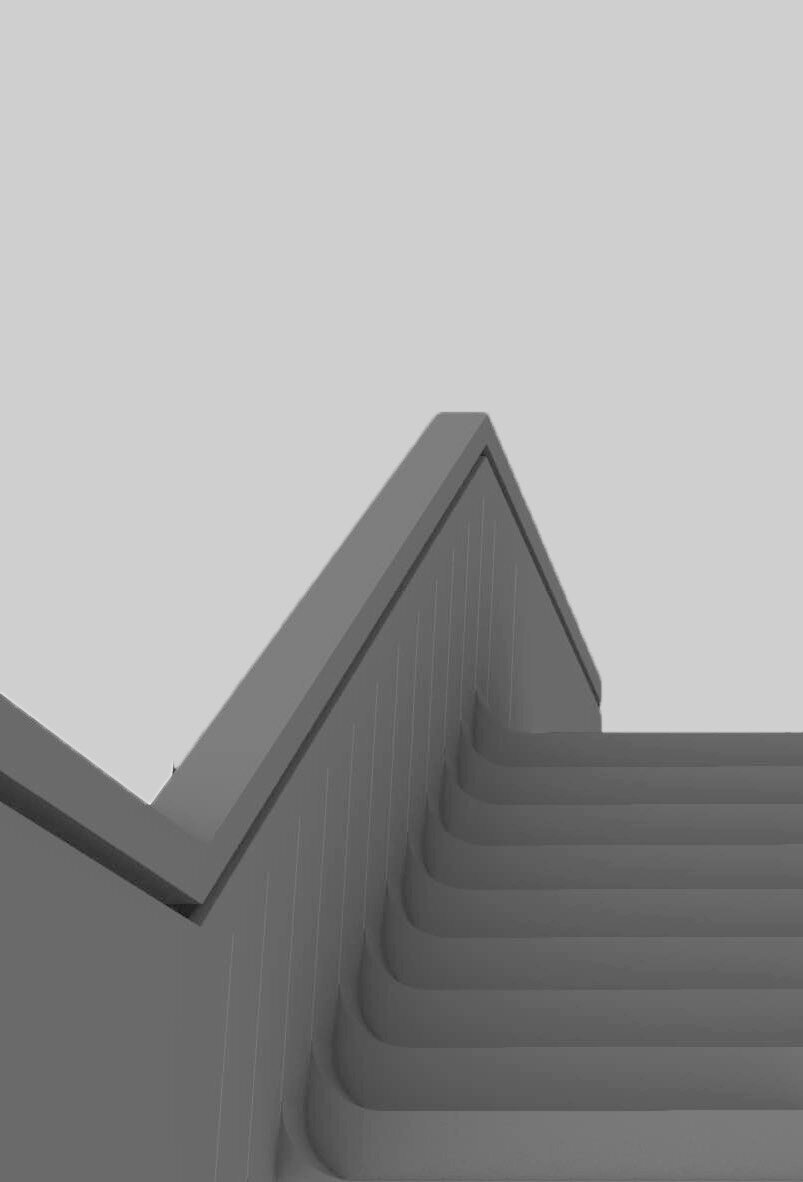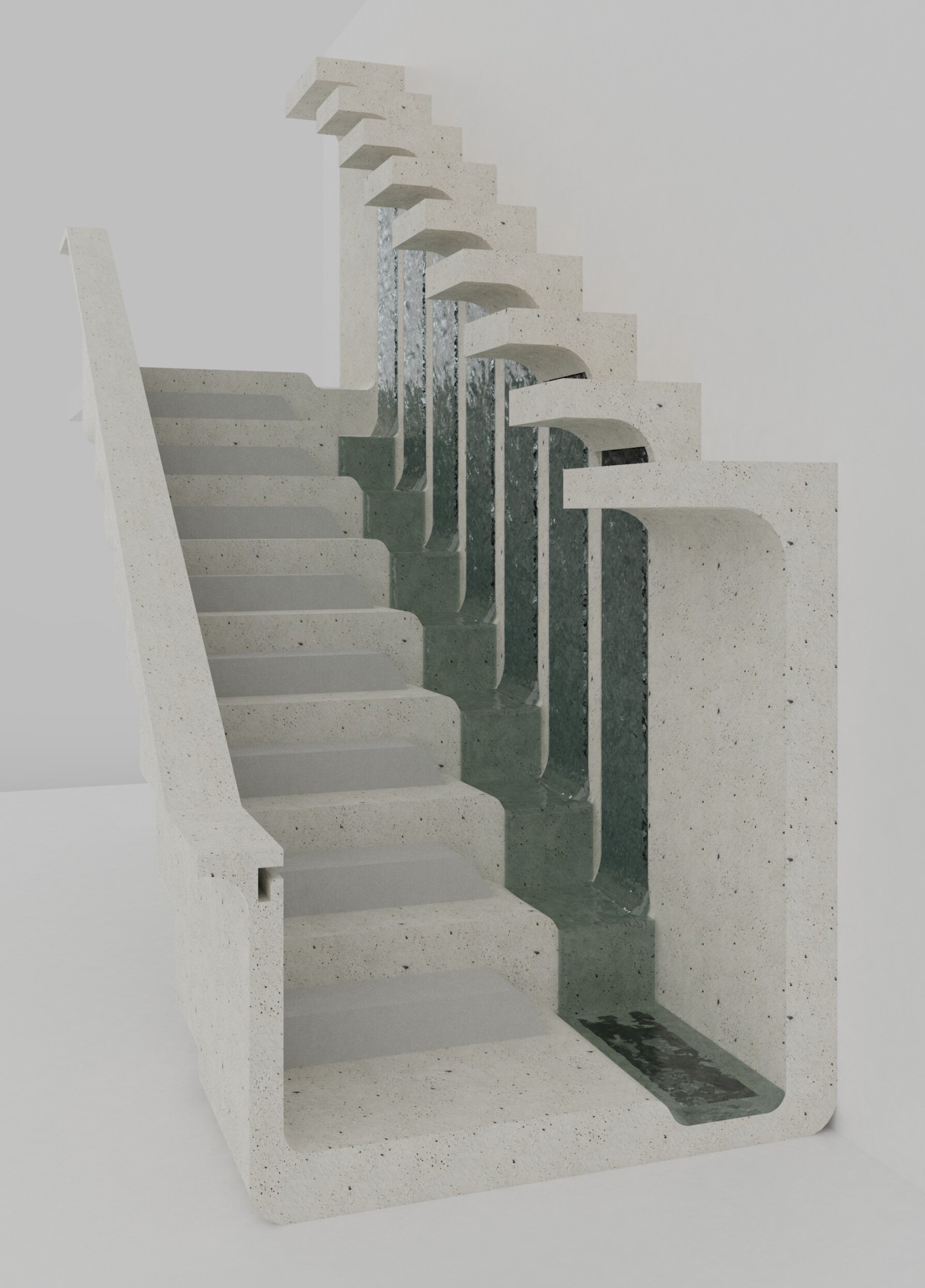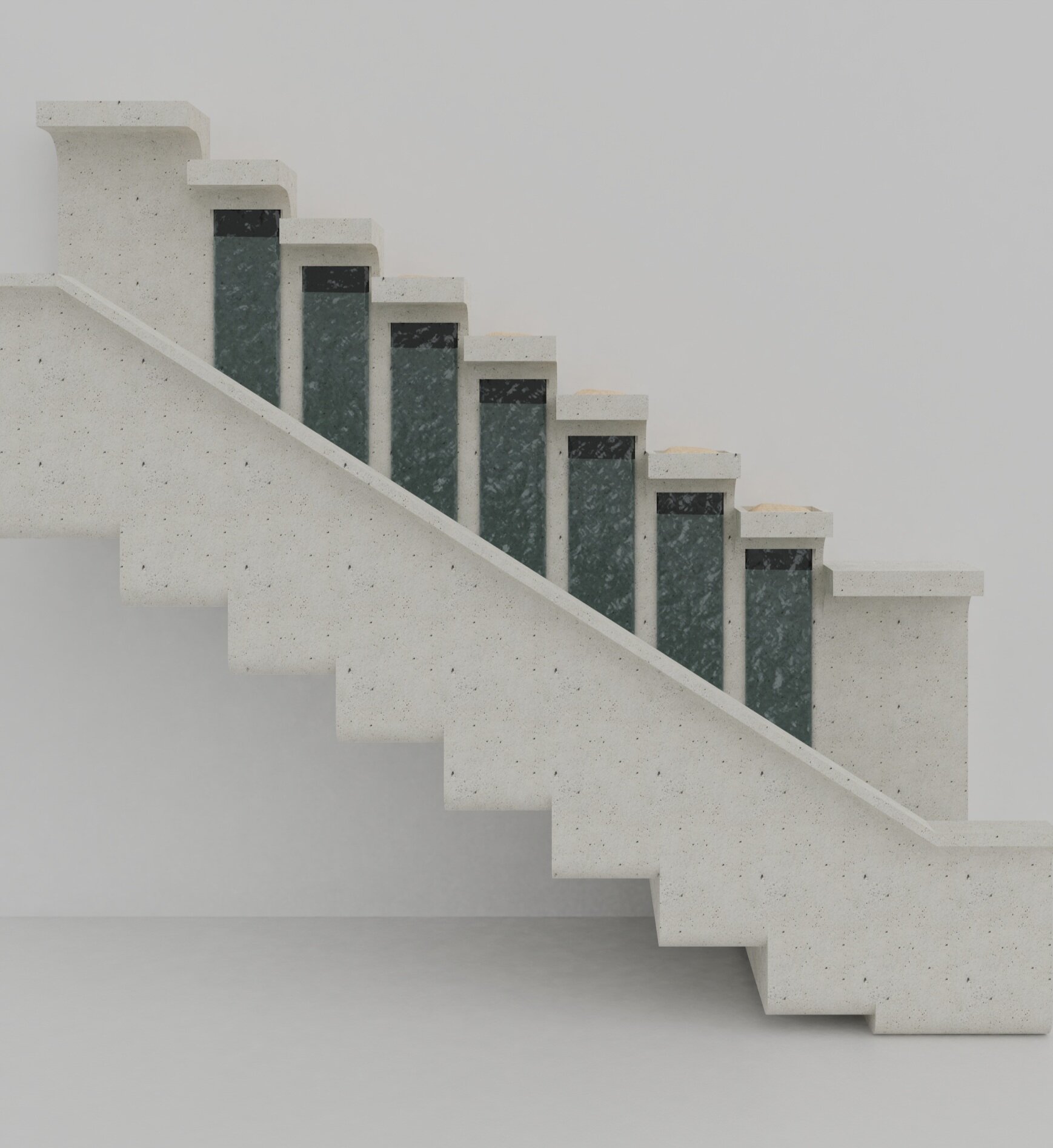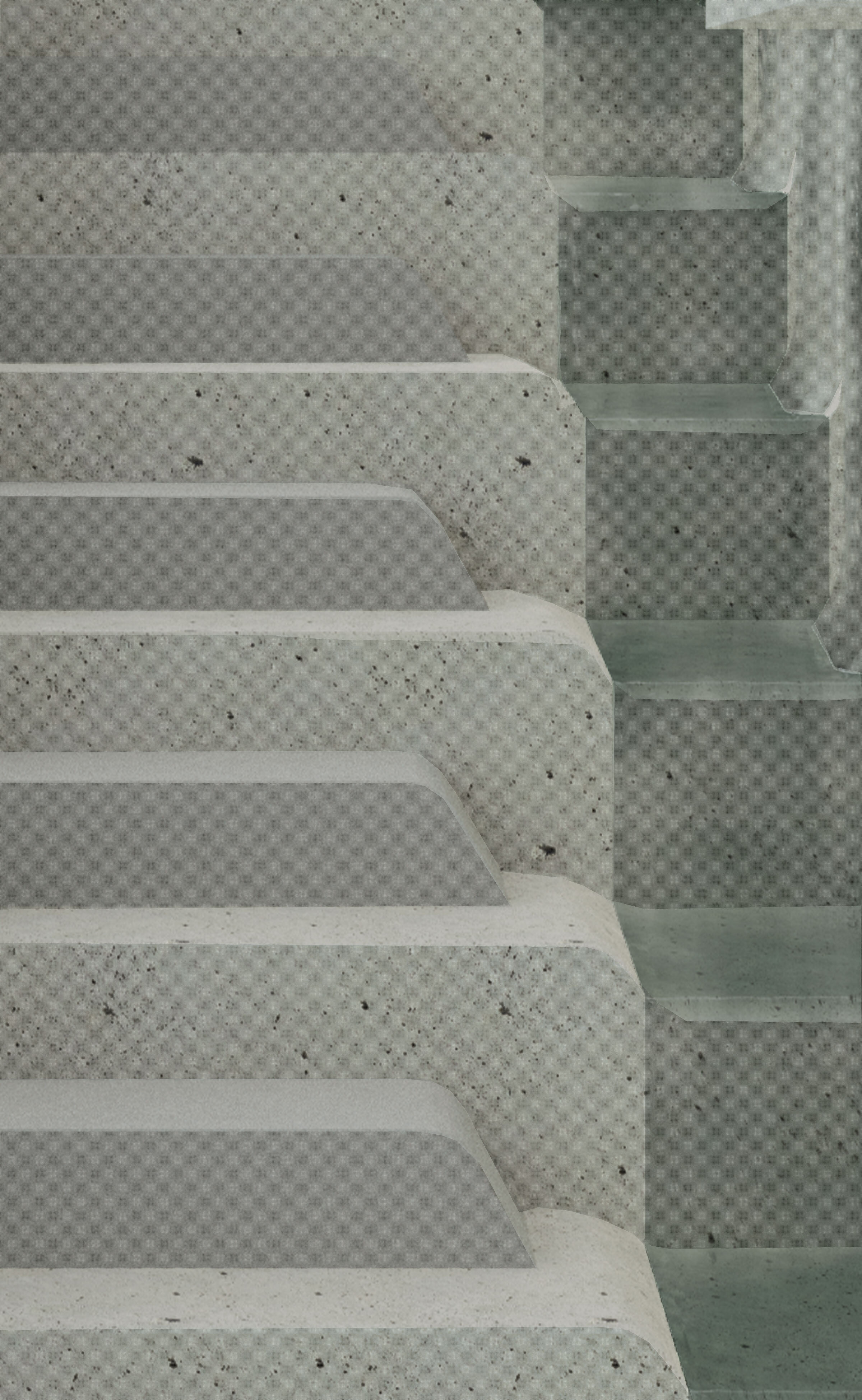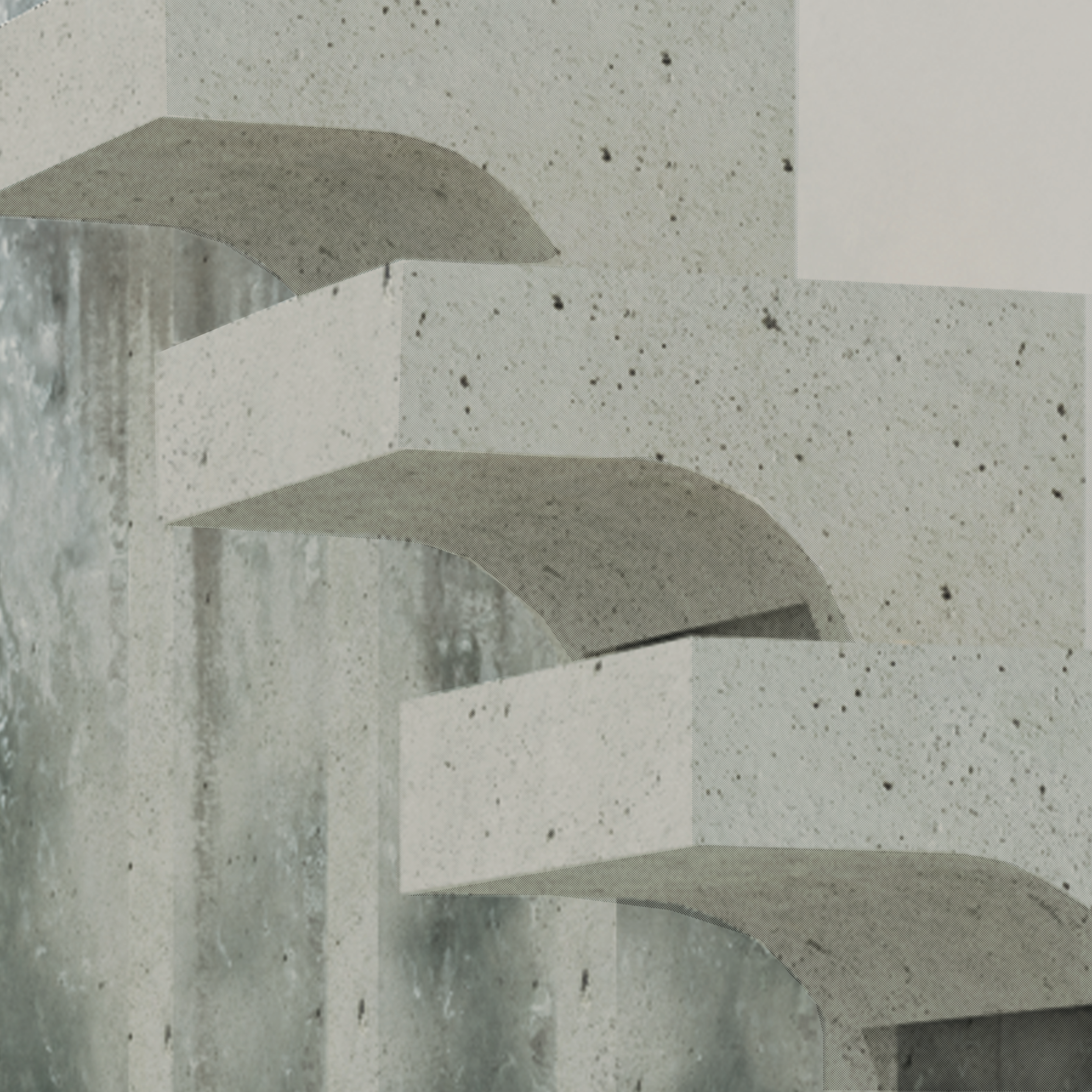Karst
Staircase for Community
on Governors Island
INFO | Collaboration with Pratt Architecture
ORGANIZATION | Master of Industrial Design at Pratt Institute
TEAM | Chi-Hao Chiang, Gigi Song
YEAR | 2020
CONTRIBUTION | Design Research, Concept Development, Ideation, CAD, Prototyping, CMF, Storytelling
Karst, a staircase designed for Governors Island,
is like a solutional cave for people to see and hear the flowing water,
with a modular water-filtering system that brings the sensation of nature into the house,
connecting the community of humans and water.
Karst blurs the boundary and blends the flow of water and human movement, creating a seamless interaction between the two.
By harnessing the power of gravity, water flows naturally from the top to the bottom, mirroring the rhythm of people walking up and down the stairs.
The design features two intertwining pathways: one for pedestrians and the other for water.
The left side of the stairway gradually transforms, with each tread evolving into a trough and cliff to guide rainwater.
After being filtered, rainwater drips from cone-shaped pockets and trickles down the steps before flowing out to the sea
The filter modules, filled with crushed oyster shells, react with acid rain to neutralize carbon dioxide and reduce ocean acidification.
This interaction helps improve ocean health by absorbing CO2 and contributing to a more alkaline environment.
Purpose
Question the relationship between industrial standardized building material and organic material in the present time when concrete jungles are sprawling on the land.
Our goal is to allow nature to appear and break the traditional boundary that we humans created, separating ourselves from nature.
Exploration
The physical exploration of many ways created the possibility of a stair, mainly in an abstract way.
We used found materials like paper clips, straws, styrofoam, pine cones, leaves, etc., to test the different effects and search for new opportunities creating a stair.
Inspiration
The styrofoam model inspired us to transfer water from a higher point to a lower point through gravity, and it allows two paths for non-humans and humans.
The pine cone model has the potential to capture water and become a filtered element.
Both models are in modular forms and their function relies heavily on gravity.
Ideation
With the two chosen models as the initial inspiration, we started doing rapid modeling as the ideation by deconstructing and reconstructing the styrofoam and pine cones.
The left focuses on the movement and space of water flowing.
The right tackles how to filter and purify water with several different modular forms.
At this phase, the two models still look similar to their origins. We also discussed back and forth to find a way of consistently merging them.
Development
Parts of the two models were printed out for conducting the exploration and testing to find the best way of combining each other,
such as should we attach the cones to the wall or the handle, should we move the troughs for water from the side of the handrail to the side of the wall, etc.
Simplification
Two forms were simplified in the end, especially the cones, to have the same design language.
The shape of the cones became geometric, stacking with each other like waves.
The troughs were moved to the other side of the staircase, becoming the connecting bridge of treads for humans and the filtering system for water.
Final Concept
Merged the treads with the wall system, to integrate everything in a whole form that presents the flow of the system.
The water capturing module was resized larger to contain bags of crushed oyster shells for water filtration.
The surface of the water trough is slanted at an angle, the detail indicates its difference with the walkable surface.
It creates a contrary flow to blur the boundary between humans and water, forming harmony with the movement of humans walking up and down.
CAD &
Render
The project is called Karst, named after the Karst terrain known for its solution caves. With its cave form and the process, acid rain can act with the crushed oyster shell.
The shells composed of calcium carbonate can react with acid rain saturated with carbon dioxide to form soluble calcium bicarbonate.
This reaction can reduce ocean acidification by absorbing carbon dioxide.
Water with dissolved bicarbonates can act as an alkaline source, helping to neutralize acid in the ocean.
The left side of the stair is designed for humans, each tread extends to gradually become the trough and cliff for water.
The rainwater drips from the cone pockets with bags of crushed oyster shells.
After the filtration, it trickles down on the cliff and flows through the troughs.








